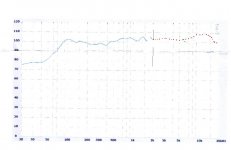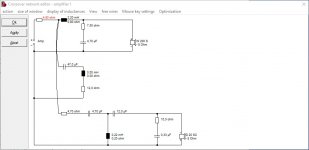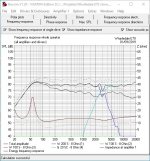Oops! right, 'Haste makes waste'! 🙁
Came back to edit it, but you beat me to it. 😉
Hope it's the former as it will maximize a SET amp's 'smiley face' shaped EQ, though best is to have tube [variable damping] treble/bass tone controls.
GM
Came back to edit it, but you beat me to it. 😉
Hope it's the former as it will maximize a SET amp's 'smiley face' shaped EQ, though best is to have tube [variable damping] treble/bass tone controls.
GM
My choice for an ultra-efficient two-way...been tossing this one around for awhile
Audio Nirvana 15 classic ferrite, a fifteen inch so-called full-ranger, and the Aurum Cantus G1 ribbon driver on top.
With sensitivities well in excess of 100Db...
A vented enclosure of 375 liters, tuned at an fb of 33.5, giving an F3 of 31.62
I believe it will get the job done & done...
=======================================Rick........
Audio Nirvana 15 classic ferrite, a fifteen inch so-called full-ranger, and the Aurum Cantus G1 ribbon driver on top.
With sensitivities well in excess of 100Db...
A vented enclosure of 375 liters, tuned at an fb of 33.5, giving an F3 of 31.62
I believe it will get the job done & done...
=======================================Rick........
Attachments
Everybody getting in a bit of a muddle here, IMO. 😀
SET amplifiers have a significant output impedance, as well as low power usually. So special considerations needed:
Arpeggio Loudspeaker - diyAudio
Bit of a masterclass there by Morgan Jones.
I have delved into this closed box/reflex issue with SET. 8" plus 1" as it goes. Closed Box (single peak) works nicely, even deeper, with SET. Reflex (double peak) gets a bit uncontrolled and flabby.
Below a few comparisons. I corrected the midrange impedance with an LCR, because that keeps things flat.
I think my added 4.8R resistor is doing the right things to simulate a SET amp.
Quite a deep subject.
SET amplifiers have a significant output impedance, as well as low power usually. So special considerations needed:
Arpeggio Loudspeaker - diyAudio
Bit of a masterclass there by Morgan Jones.
I have delved into this closed box/reflex issue with SET. 8" plus 1" as it goes. Closed Box (single peak) works nicely, even deeper, with SET. Reflex (double peak) gets a bit uncontrolled and flabby.
Below a few comparisons. I corrected the midrange impedance with an LCR, because that keeps things flat.
I think my added 4.8R resistor is doing the right things to simulate a SET amp.
Quite a deep subject.
Attachments
If you have the amplifier already then it would be possible to measure the output impedance. You don't have to rely on a manufacturer's spec.
As soon as you know that value it is possible to design a speaker which takes that into consideration.
Regards
Charles
As soon as you know that value it is possible to design a speaker which takes that into consideration.
Regards
Charles
Just spotted, in a previous post, that the manufacturer's specification states "6W (ultra-linear connection)". So, it doesn't appear to be a SET. This means that there will almost certainly be a degree of overall negative feedback, and the exact output impedance will be difficult to ascertain - but it's likely that damping factor is quite acceptable.
In other words, don't worry about it! It's an amplifier - that's all.
In other words, don't worry about it! It's an amplifier - that's all.
Must add: the quality of the output transformers will be important in defining damping factor at bass frequencies (which is what we're mostly concerned about).
Probably best to measure it...
Probably best to measure it...
I wanted (and still want) either Eminence Delta 12-A or Fane Sovereign 12-300 but, no matter how I've tried, no matter which software I used (vituixCAD, SPL Trace and some other one, but can't remember its name) I couldn't trace correctly the impedance curve for neither of them so I ended up with P.audio HP-12W and a Monacor d28n. As you can see nothing spectacular, nothing fancyIf tubes, you're 'golden' 😉. This 'begs' the question; what drivers/speakers?
GM
If you have the amplifier already then it would be possible to measure the output impedance. You don't have to rely on a manufacturer's spec.
As soon as you know that value it is possible to design a speaker which takes that into consideration.
Regards
Charles
That would be swell if I knew how to do it
Rod tells how it is done here, in the 'Amplifier Impedance' section;
this method requires a signal generator and a voltmeter:
Impedance, and how it affects audio equipment
this method requires a signal generator and a voltmeter:
Impedance, and how it affects audio equipment
Rod tells how it is done here, in the 'Amplifier Impedance' section;
this method requires a signal generator and a voltmeter:
Impedance, and how it affects audio equipment
Thank you
Most speaker measurement softwares have a signal generator included. Therefore I asked for the soundcard.
If you don't have a voltmeter that is usable for this task like explained in the Rod Eliott link it is even possible to use the frequency response measurement function of suich a program for that task though a little less convenient than the voltmeter.
With a tube amp I wouldn't use the amp without any load so instead of using open output and loaded Output for the measurement I would go for two different load resistors and measure the output voltage for the two loads.
The amp impedance is then calculated by
Ri = (Uout1 - Uout2)/(Iout1-Iout2)
The outpuit current doesn't have to be measured it can be caltulated via Ohm's law.
Regards
Charles
If you don't have a voltmeter that is usable for this task like explained in the Rod Eliott link it is even possible to use the frequency response measurement function of suich a program for that task though a little less convenient than the voltmeter.
With a tube amp I wouldn't use the amp without any load so instead of using open output and loaded Output for the measurement I would go for two different load resistors and measure the output voltage for the two loads.
The amp impedance is then calculated by
Ri = (Uout1 - Uout2)/(Iout1-Iout2)
The outpuit current doesn't have to be measured it can be caltulated via Ohm's law.
Regards
Charles
Your post contains the most usable information for the entire thread. ThanksThe amp impedance is then calculated by
Ri = (Uout1 - Uout2)/(Iout1-Iout2)
The outpuit current doesn't have to be measured it can be caltulated via Ohm's law.
For those that are confused please identify the variables:
Ri
Uout1
Uout2
Iout1
Iout2
Thanks DT
Many think of Ohm's Law as:
E = I * R
I thought Ohm's Law was V= I x R as it goes. 😕
The lightbulb relationship between Battery Voltage and Current and Resistance.... useful for designers of bicycle lamps. Using the Reals R.
In speakers we have to consider complex numbers C. Capacitors and coils have a 90 degree Voltage and Current relationship.
Still only a two dimensional C algebra. And essentially 200 years old. So doable IMO.
Quanta Magazine
Anyhow, the answer to the SET amp question is Closed Box IMO. It stays well-behaved with an output amplifier resistance added.
Software | Visaton
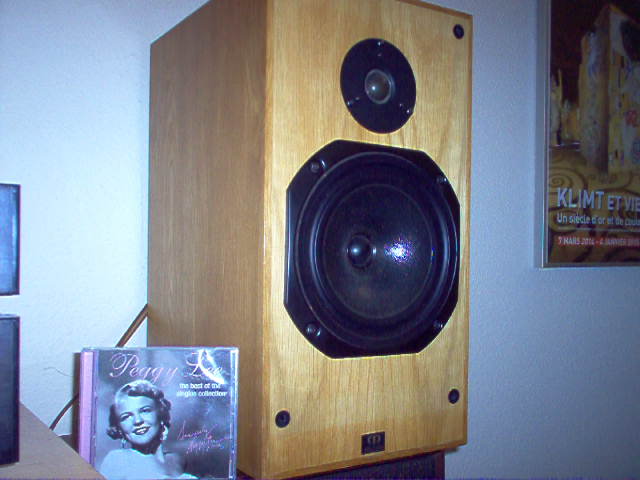
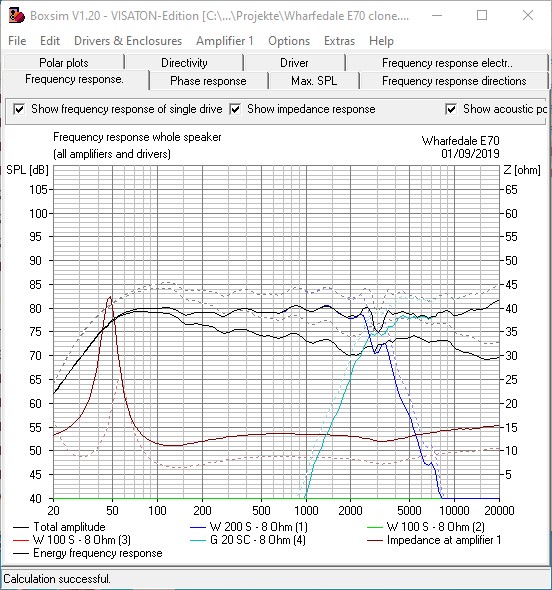
Valve amps in general don't like reflex loading. Not surprising since Reflex is designed for tight control from a low output impedance Voltage feedback amplifier. With SET amps, you must also try and keep overall impedance flat. Otherwise the frequency response goes wobbly.
The lightbulb relationship between Battery Voltage and Current and Resistance.... useful for designers of bicycle lamps. Using the Reals R.
In speakers we have to consider complex numbers C. Capacitors and coils have a 90 degree Voltage and Current relationship.
Still only a two dimensional C algebra. And essentially 200 years old. So doable IMO.
To reconstruct particle physics, Furey uses the product of the four division algebras, R⊗C⊗H⊗O (R for reals, C for complex numbers, H for quaternions and O for octonions) — sometimes called the Dixon algebra, after Geoffrey Dixon, a physicist who first took this tack in the 1970s and ’80s before failing to get a faculty job and leaving the field. (Dixon forwarded me a passage from his memoirs: “What I had was an out-of-control intuition that these algebras were key to understanding particle physics, and I was willing to follow this intuition off a cliff if need be. Some might say I did.”)
Quanta Magazine
Anyhow, the answer to the SET amp question is Closed Box IMO. It stays well-behaved with an output amplifier resistance added.
Software | Visaton
Valve amps in general don't like reflex loading. Not surprising since Reflex is designed for tight control from a low output impedance Voltage feedback amplifier. With SET amps, you must also try and keep overall impedance flat. Otherwise the frequency response goes wobbly.
Last edited:
- Home
- Loudspeakers
- Multi-Way
- Sealed or vented
